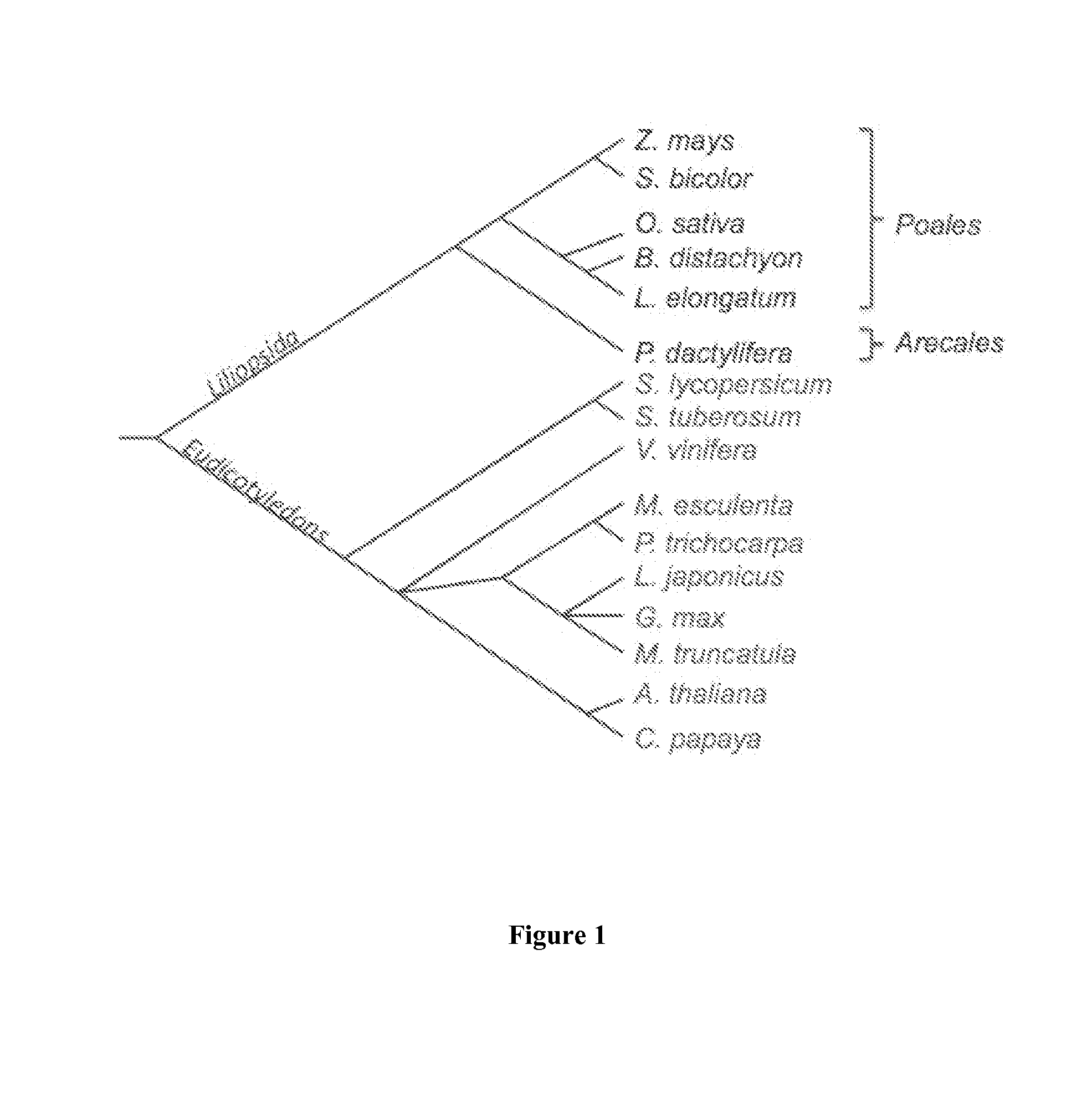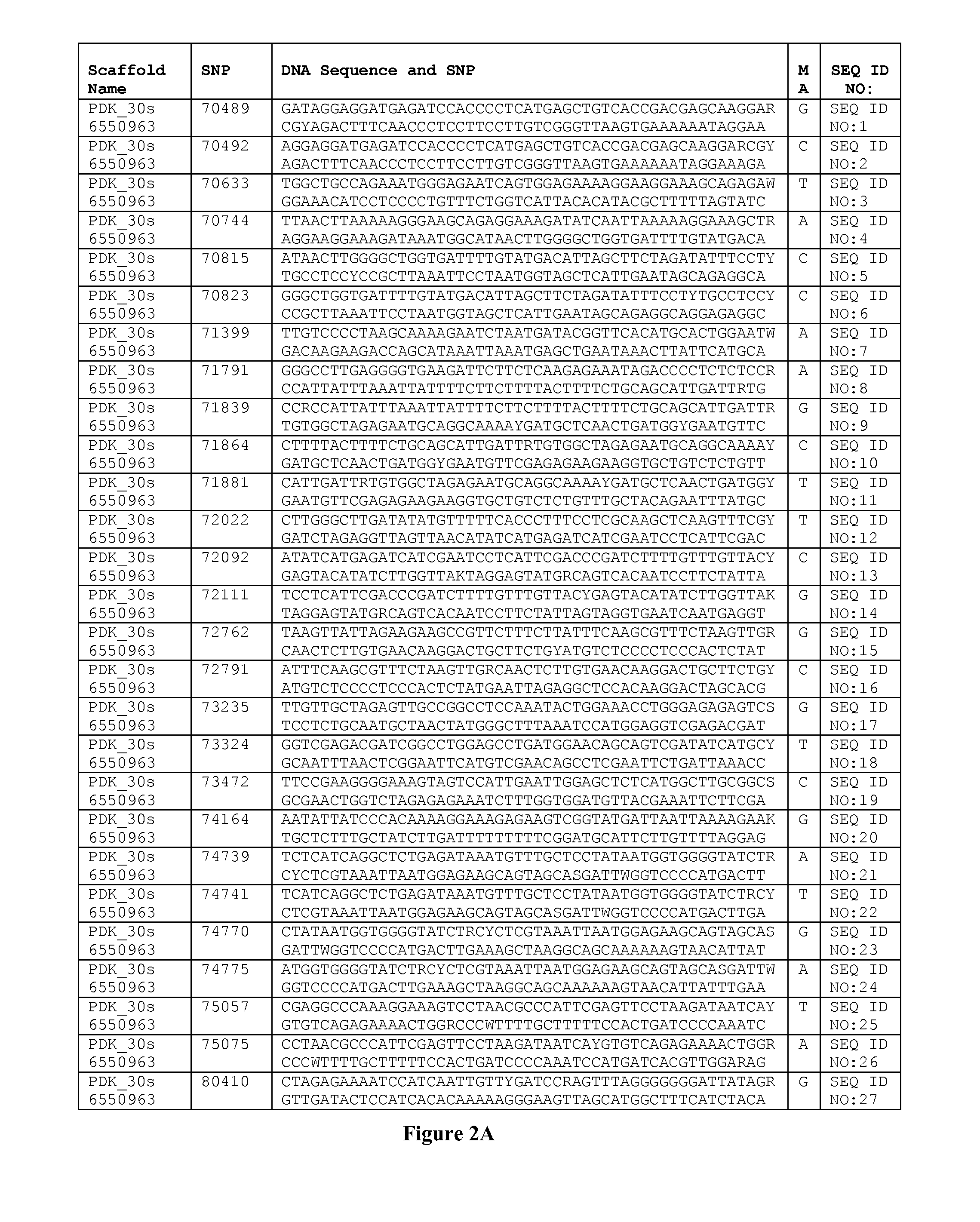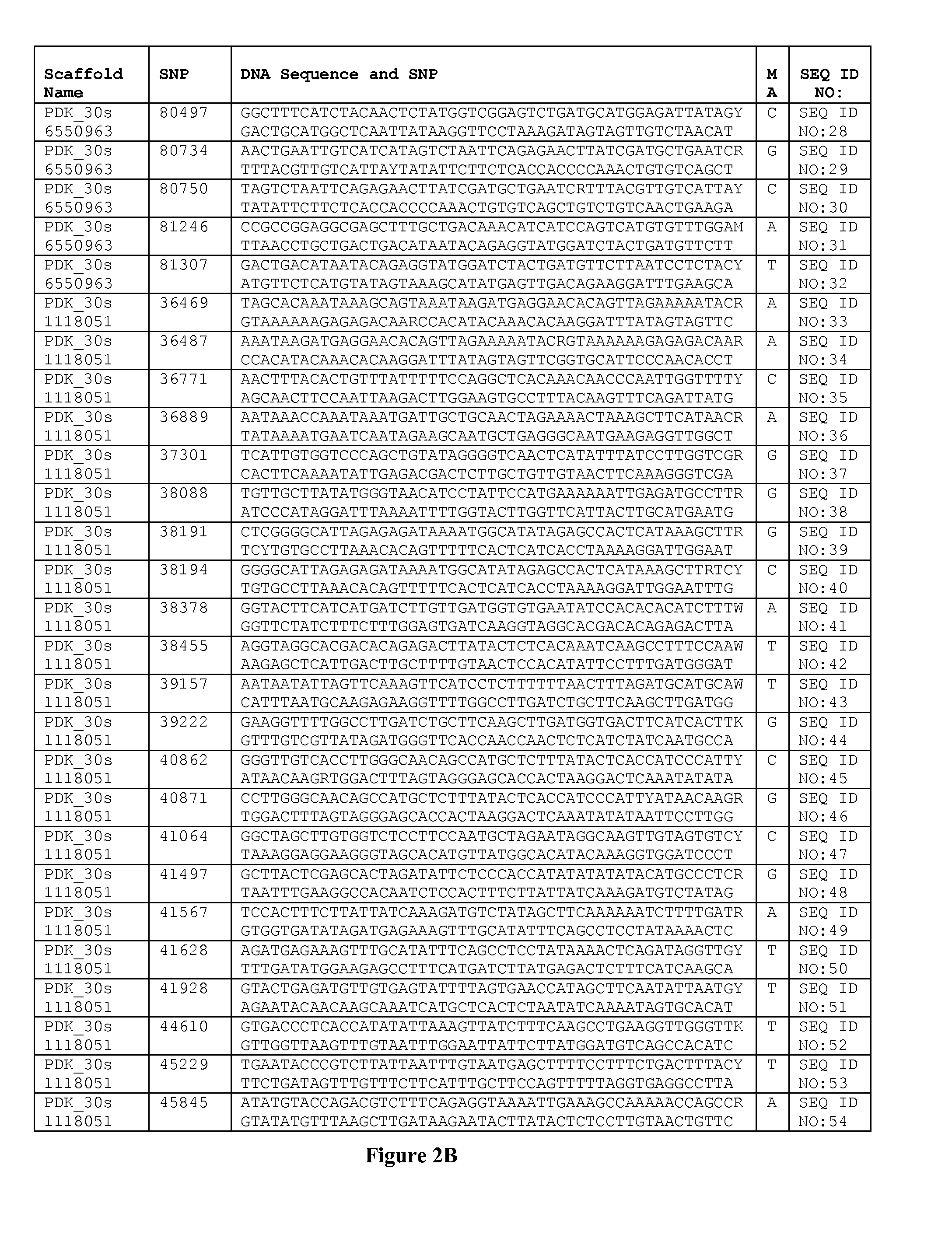Genetics of gender discrimination in date palm
a technology of date palm and genetics, applied in the field of date palm genetics, can solve the problems of long plant generation time, inability to simply distinguish between the many varieties of date palm, and inability to distinguish female from male trees at an early stage, and achieve the effects of minimal care, high fruit content, and hindering the genetic study of date palm
- Summary
- Abstract
- Description
- Claims
- Application Information
AI Technical Summary
Benefits of technology
Problems solved by technology
Method used
Image
Examples
example 1
Materials and Methods
[0094]Date palm genomic DNA was extracted from leaves obtained from farmed trees in the Doha, Qatar area and at the USDA collection in Riverside, Calif. The Khalas female had been grown from well-documented plant tissue culture. The Alrijal female and Khalt male were seed grown but otherwise of unknown descent. Genomic libraries of various sizes were constructed. Paired-end sequencing on the Illumina Genome Analyzer II (Illumina, San Diego, Calif.) was carried out according to the manufacturer's protocols. The genome was assembled and scaffolded using SOAPdenovo v1.4 (Li et al., “De novo Assembly of Human Genomes with Massively Parallel Short Read Sequencing,”Genome Research 20:265-72 (2010), which is hereby incorporated by reference in its entirety) with a kmer of 31. Scaffolding using type III restriction libraries was conducted in BAMBUS (Pop et al., “Hierarchical Scaffolding with Bambus,”Genome Research 14:149-159 (2004), which is hereby incorporated by refe...
example 2
Genomic Libraries and Sequencing
[0105]DNA was extracted from the fresh leaves of date palm trees using the Wizard Genomic DNA preparation kit (Promega, Madison, Wis.). Leaves used for preparation of DNA employed in generating the Deglet Noor fosmid library were derived from the seedling of a single germinated seed.
[0106]Library construction for the short-paired libraries was conducted according to the manufacturer's protocol (Illumina, San Diego, Calif.). Two paired libraries of average insert size 172 bp and 370 bp were utilized. Longer mate-pair libraries were constructed using a linker sequence-modified version of the Type restriction enzyme EcoP15I library method as used by McKernan et al., “Sequence and Structural Variation in a Human Genome Uncovered by Short-read, Massively Parallel Ligation Sequencing Using Two-base Encoding,”Genome Research 19:1527-41 (2009) (which is hereby incorporated by reference in its entirety), producing 25-27 bp from either end of a DNA molecule. Fo...
example 3
[0107]A repeat masked version of the genome was utilized for gene prediction. Ten million random short reads were assembled to create an initial repetitive region database to screen against the sequence data using REPEATMASKER. Previously trained monocot gene prediction parameters were used with the FGENESH++ pipeline, and the entire Plant section of REFSEQ was employed as input for homology searches. For the fosmid sequences, predicted Open Reading Frames (“ORFs”) were searched against the GenBank nonredundant nt and EST databases using BLASTN and against the nr database using BLASTX. A cutoff value of e−10 was used as the significance similarity threshold for the comparison.
PUM
| Property | Measurement | Unit |
|---|---|---|
| Linkage disequilibrium | aaaaa | aaaaa |
Abstract
Description
Claims
Application Information
 Login to View More
Login to View More - R&D
- Intellectual Property
- Life Sciences
- Materials
- Tech Scout
- Unparalleled Data Quality
- Higher Quality Content
- 60% Fewer Hallucinations
Browse by: Latest US Patents, China's latest patents, Technical Efficacy Thesaurus, Application Domain, Technology Topic, Popular Technical Reports.
© 2025 PatSnap. All rights reserved.Legal|Privacy policy|Modern Slavery Act Transparency Statement|Sitemap|About US| Contact US: help@patsnap.com



